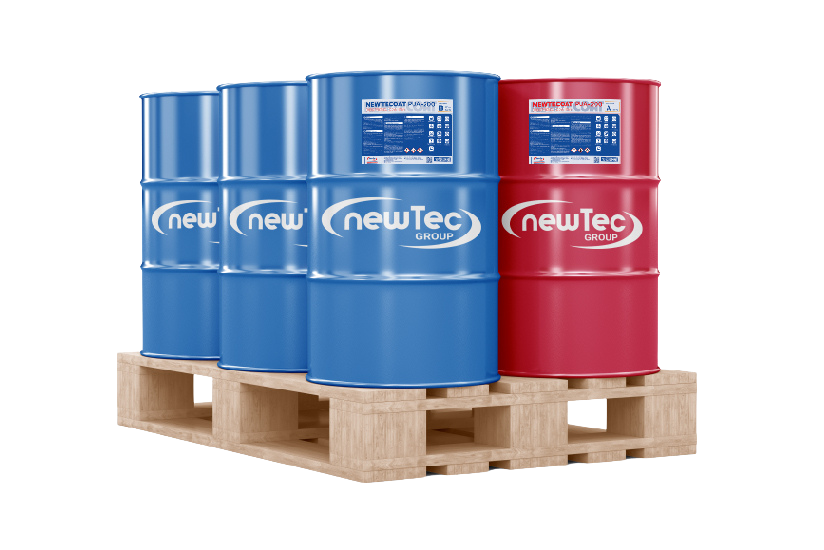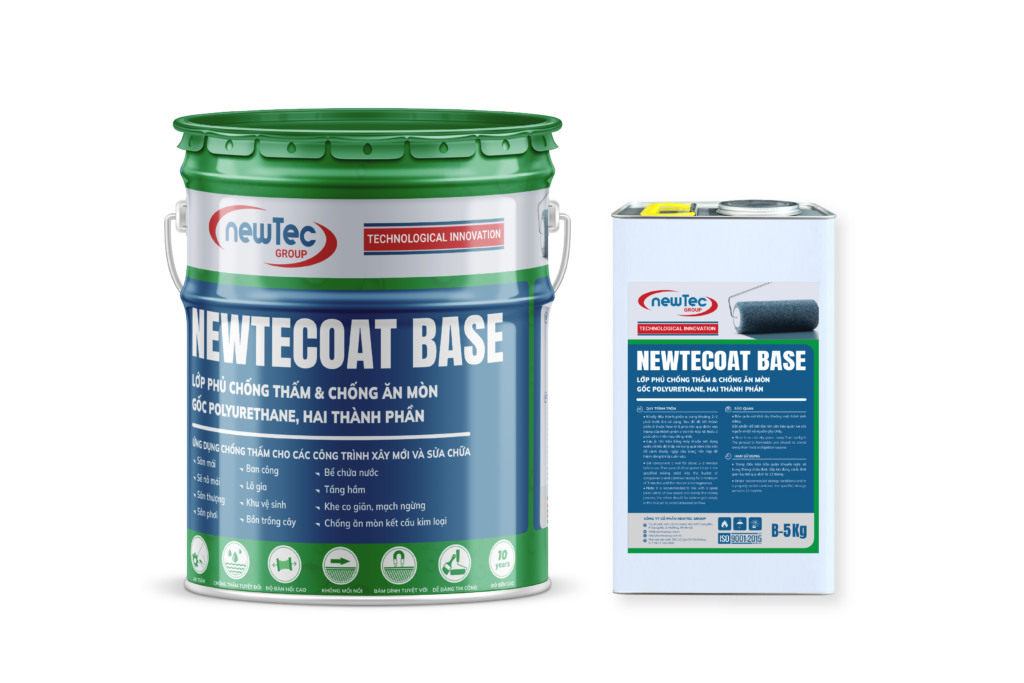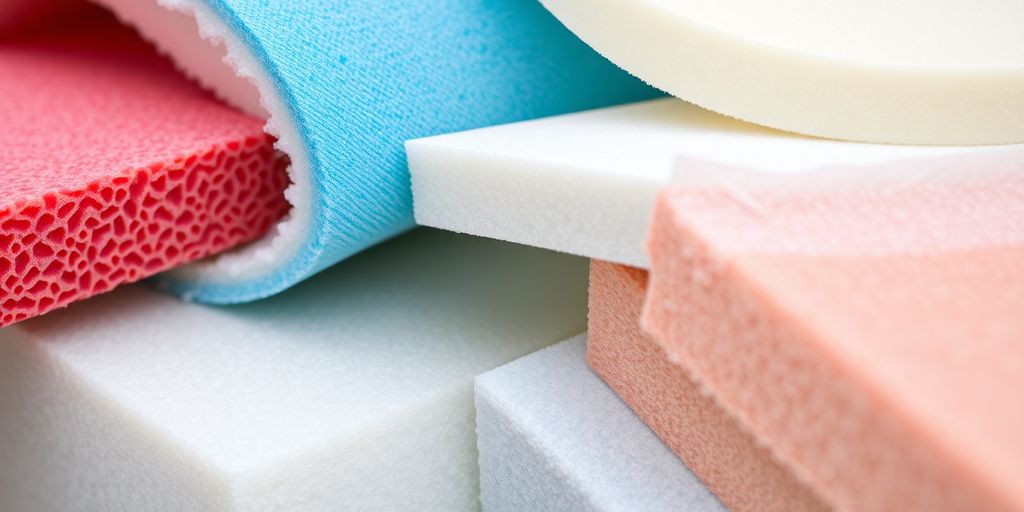Ever wondered if polyurethane is a type of plastic? It’s a question that pops up quite often. Polyurethane is everywhere, from your car seats to your fridge insulation. It might not be as famous as other plastics like PVC or polyethylene, but it plays a huge role in our daily lives. Let’s break down what polyurethane really is, how it’s used, and why some folks get confused about whether it’s a plastic or not.
Key Takeaways
- Polyurethane is a versatile material used in many industries, often mistaken for plastic.
- It shares some characteristics with traditional plastics but has unique properties.
- Polyurethane is known for its durability, flexibility, and resistance to chemicals.
- Despite its benefits, there are environmental concerns related to its use.
- The future of polyurethane includes innovations and sustainable practices.
What is Polyurethane?
Definition and Composition
Polyurethane is a versatile material that’s part of a larger group known as polymers. It’s created through a chemical reaction between diisocyanates and polyols. These reactions can be tweaked to make polyurethane with different characteristics. This adaptability makes polyurethane a standout material in various industries.
Historical Development
The journey of polyurethane began in the 1930s, thanks to the work of German chemist Otto Bayer. Initially used in World War II for aircraft coatings, its applications have expanded over the decades. From the 1950s onwards, it found its way into everyday products, revolutionizing furniture, insulation, and even footwear.
Types of Polyurethane
Polyurethane comes in several forms, each suited to specific uses:
- Flexible Foams: Often used in upholstery and mattresses, providing comfort and support.
- Rigid Foams: Known for their lightweight yet sturdy nature, they are key in structural applications.
- Elastomers: These are rubber-like and used in tires and wheels.
- Coatings, Adhesives, and Sealants: Essential in protecting surfaces and bonding materials together.
Polyurethane’s unique ability to be molded and shaped into various forms while maintaining durability and resilience is what sets it apart in the world of materials.
Is Polyurethane a Plastic?

Comparison with Traditional Plastics
Polyurethane is often lumped in with plastics, but it’s a bit different. Traditional plastics, like polyethylene or polystyrene, are made from repeating units of the same molecule. Polyurethane, on the other hand, is a polymer made from a chemical reaction between a polyol and an isocyanate. This gives it a unique structure that sets it apart from other plastics. Unlike many traditional plastics, polyurethane can be both rigid and flexible, depending on how it’s made.
- Polyurethane can be tailored to be soft like a cushion or hard like a skateboard wheel.
- It tends to have better abrasion resistance compared to typical plastics.
- It’s often used where durability is key, like in superior resistance to impact applications.
Chemical Structure Analysis
The chemical structure of polyurethane is fascinating. It’s a polymer, just like plastic, but its backbone is made up of urethane links. These links form because of the reaction between the polyol and isocyanate. This structure gives polyurethane its versatility. The ability to tweak the chemical makeup means it can be adapted for a wide range of uses, from foam mattresses to industrial parts.
Common Misconceptions
People often think polyurethane is just another plastic, but that’s not quite right. Here are some common misconceptions:
- Polyurethane is the same as polyester. They sound similar but are different materials with distinct properties.
- Polyurethane is not recyclable. While challenging, recycling is possible with the right processes.
- Polyurethane is always rigid. It can actually be either rigid or flexible, depending on its formulation.
Polyurethane is a unique material that doesn’t fit neatly into the "plastic" category. Its versatility and adaptability make it an essential material in many industries, offering properties that traditional plastics just can’t match.
Properties of Polyurethane
Durability and Flexibility
Polyurethane is known for its remarkable durability and flexibility. Unlike some materials that crack under pressure, polyurethane can bend and stretch without losing its shape. This makes it an excellent choice for products that need to withstand heavy use. For instance, in the automotive industry, polyurethane components are favored for their ability to endure wear and tear while maintaining performance.
Thermal and Chemical Resistance
When it comes to handling heat and chemicals, polyurethane stands out. It can resist temperatures that would damage other materials, making it suitable for environments where heat is a factor. Additionally, its chemical resistance means it won’t easily break down when exposed to oils, solvents, or other harsh substances. This resilience is why polyurethane is often used in coatings and sealants.
Environmental Impact
Polyurethane’s environmental impact is a mixed bag. On one hand, its durability means products last longer, reducing waste. On the other hand, it’s not the easiest material to recycle, which can be a downside. However, innovations are underway to make polyurethane more eco-friendly, such as developing biodegradable versions or improving recycling processes. As the demand for sustainable materials grows, polyurethane’s role in construction and other industries may evolve to meet these needs.
Polyurethane’s unique blend of properties makes it a go-to material for many industries, balancing performance with challenges in sustainability. As we look to the future, finding ways to enhance its eco-friendliness will be key.
Common Uses of Polyurethane
Applications in Construction
Polyurethane is a go-to material in the construction industry, thanks to its versatility and performance. It’s widely used in insulation panels that provide superior thermal and acoustic insulation for buildings. These PU polyurethane parts are essential for maintaining energy efficiency and reducing noise pollution. Polyurethane sealants and adhesives are also popular in construction for their durability and ability to withstand harsh weather conditions.
Role in Automotive Industry
In the automotive world, polyurethane finds its way into many components. It’s used in seating for its comfort and flexibility, providing a cushioned ride. The material’s lightweight nature helps improve fuel efficiency by reducing the overall weight of vehicles. Additionally, polyurethane coatings protect car exteriors from scratches and corrosion, keeping vehicles looking new longer.
Use in Consumer Goods
Polyurethane’s presence in everyday consumer goods is hard to miss. You’ll find it in furniture, where it’s used for cushioning and upholstery due to its comfort and durability. In footwear, polyurethane soles offer flexibility and wear resistance, making shoes more comfortable and long-lasting. It’s also found in electronic devices, providing protective coatings that enhance durability and longevity.
Polyurethane’s adaptability makes it a staple across various industries, from construction to consumer goods, demonstrating its importance in modern manufacturing and everyday life.
Manufacturing Process of Polyurethane
Raw Materials and Ingredients
Polyurethane is made by reacting two main ingredients: polyols and isocyanates. These components are carefully selected based on the desired properties of the final product. Additives like catalysts, blowing agents, and flame retardants are often included to enhance performance. The choice of raw materials significantly influences the characteristics of the polyurethane.
Production Techniques
The production of polyurethane involves several key steps. First, the polyols and isocyanates are mixed together in precise proportions. This mixture might include additives depending on the intended use. Next, the reaction mixture is poured into molds or onto surfaces where it begins to expand and cure. This curing process is crucial as it determines the final properties of the polyurethane.
- Mixing: The ingredients are combined using specialized equipment to ensure a consistent blend.
- Pouring: The mixture is poured into molds or onto surfaces to form the desired shape.
- Curing: The material is left to cure, allowing the chemical reaction to complete and the structure to solidify.
Quality Control Measures
Quality control is a vital part of the polyurethane manufacturing process. It ensures that the product meets specific standards and performs as expected. Tests are conducted to check for defects, measure density, and verify the material’s physical properties. Regular inspections throughout the production process help maintain consistency and quality.
In the world of manufacturing, attention to detail is everything. Each step in the production of polyurethane is meticulously monitored to create a reliable and high-performing material. From selecting the right ingredients to ensuring a flawless finish, every detail counts.
For more information on how PU foam is produced, including its use in car seats and furniture, consider exploring detailed production methods.
Advantages and Disadvantages of Polyurethane
Benefits Over Other Materials
Polyurethane is pretty versatile. It’s used in everything from furniture to car parts. Its flexibility and toughness make it a go-to choice for many industries. Unlike some materials, polyurethane can be molded into almost any shape, which is a huge plus. It also resists wear and tear better than a lot of other materials.
- Durability: Polyurethane lasts longer compared to traditional rubber or plastic.
- Flexibility: It can be easily molded and shaped.
- Resistance: It withstands chemicals and abrasion quite well.
Potential Drawbacks
But, it’s not all sunshine and rainbows. There are some downsides too. Polyurethane can be more expensive than other materials. Also, it’s not always the best when it comes to handling heat. If it gets too hot, it might not hold up so well.
- Cost: Generally more expensive than some alternatives.
- Heat Sensitivity: Not the best under high temperatures.
- Environmental Concerns: Not the most eco-friendly option.
Sustainability Considerations
Polyurethane isn’t exactly known for being green. It’s made from petrochemicals, which isn’t great for the planet. However, there are efforts to make it more sustainable. Some companies are working on bio-based polyurethanes, which could be a step in the right direction.
Polyurethane is a bit of a mixed bag. It offers a lot of benefits but also comes with some challenges, especially when it comes to sustainability.
For instance, polyurethane bushings enhance a car’s handling but can lead to a stiffer ride. This article explores the advantages and disadvantages of using these bushings.
Future Trends in Polyurethane Development

Polyurethane is evolving with new advancements in material science. Researchers are experimenting with bio-based polyurethanes, aiming to reduce reliance on fossil fuels. These bio-based alternatives are not only more sustainable but also show promising properties like enhanced flexibility and strength. Another exciting development is the incorporation of nanotechnology to improve the thermal and mechanical properties of polyurethane products.
The polyurethane industry is on an upward trajectory, with the market projected to grow from $104.46 billion in 2024 to $120.74 billion in 2025, reflecting a compound annual growth rate (CAGR) of 15.6%. This growth is fueled by increasing demand in various sectors, including automotive, construction, and electronics. As industries seek more durable and efficient materials, polyurethane’s versatility makes it a top choice.
Despite its growth, the polyurethane industry faces several challenges. Environmental concerns about the disposal and recyclability of polyurethane products are significant. To address these issues, companies are investing in research to develop more eco-friendly production methods and recycling technologies. Another challenge is the volatility of raw material prices, which can impact production costs. Companies are exploring alternative raw materials and more efficient production processes to mitigate these effects.
As the industry continues to innovate, the balance between sustainability and performance remains a key focus. The future of polyurethane looks promising, with ongoing research and development paving the way for more sustainable and high-performing products.
Wrapping It Up: Polyurethane and Its Role in Our World
So, is polyurethane a plastic? Well, kind of. It’s a bit of a hybrid, really. Polyurethane shares some traits with plastics, like being moldable and durable, but it’s got its own unique vibe. It’s used in everything from furniture to insulation, and even in your favorite pair of sneakers. It’s pretty versatile, which is why you see it everywhere. But remember, while it acts like plastic, it’s not exactly the same thing. It’s more like a cousin in the big family of materials we use every day. So next time you come across something made of polyurethane, you’ll know it’s not just any old plastic—it’s got its own story to tell.
Frequently Asked Questions
Is polyurethane considered a type of plastic?
Yes, polyurethane is a type of plastic, but it’s different from traditional plastics because of its unique chemical structure and properties.
What are some common uses of polyurethane?
Polyurethane is used in many products, like foam cushions, insulation panels, car parts, and even in some paints and adhesives.
How is polyurethane made?
Polyurethane is made through a chemical reaction between two main ingredients: a polyol and a diisocyanate, which creates a versatile material.
What makes polyurethane different from other plastics?
Unlike many plastics, polyurethane can be both flexible and rigid, making it suitable for a wide range of applications.
Is polyurethane environmentally friendly?
Polyurethane can have environmental impacts, but efforts are being made to improve its sustainability through recycling and using eco-friendly materials.
Can polyurethane be recycled?
Yes, polyurethane can be recycled, but the process can be complex. Innovations are being developed to make recycling easier and more effective.





You may also be interested in
Understanding What Polyurethane Foam When Burned Gives Off: Health Risks and Safety Precautions
Polyurethane foam is commonly used in many products, from furniture to insulation. However, when it
May
Exploring the Question: Is Polyurethane Durable Enough for Everyday Use?
Polyurethane is everywhere, from the cushions on your couch to the insulation in your walls.
May
Exploring the Truth: Is Polyurethane Eco Friendly in Today’s World?
Polyurethane is everywhere these days, from your furniture to your sneakers, but is polyurethane eco
May
Trusted Polyurea Manufacturer for Philippines Supporting Industrial and Construction Excellence
The polyurea market in the Philippines is poised for significant growth from 2025 to 2031,
May
The Role of a Reliable Polyurea Manufacturer for Malaysia in Enhancing Construction Quality
Polyurea coatings have become increasingly vital in Malaysia’s industrial and construction sectors due to their
May
Reliable Polyurea Manufacturer for Cambodia Supporting Industrial and Construction Growth
Polyurea coatings are increasingly recognized for their vital role in the industrial and construction sectors,
May
Meet the Leading Polyurea Manufacturer for Thailand Powering Industrial Applications
Polyurea coatings have become an essential solution in various industrial sectors due to their exceptional durability, rapid curing times, and resistance to
May
Exploring Polyurea Manufacturer & Custom Coating Options in Southeast Asia
Polyurea coatings have become a game-changer in the protective coatings industry due to their remarkable
May